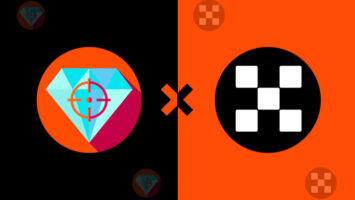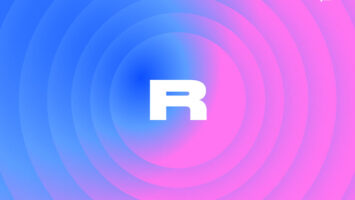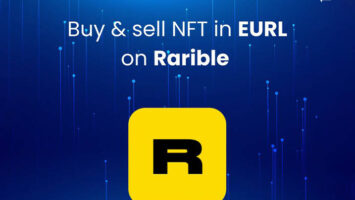Non-fungible tokens, often known as NFTs, are becoming more and more well-liked as investments and collectibles. However, the value of the NFT mostly hinges on its rarity, or how few NFTs exactly like it have ever been made. Keep in mind that each NFT is unique.
It fits the concept of a non-fungible token, which is a token that cannot be traded for another token that is precisely like it.
How is the value of an NFT even determined?
Each token will have a varied amount of rarity depending on the precise combination of features and the rarity of each NFT attribute. The NFT may be more valuable the rarer it is.
Because most NFTs have little inherent value save the value to collectors, I say “might be.” But when users consider the costliest NFT ever sold, they understand there must be a catch.
How is NFT Rarity Determined?
The rarity of an NFT can be determined using a variety of techniques. On the other hand, the de facto standard method determines the total rarity score of an NFT by adding the rarity scores of each trait value.
Users can construct an NFT rarity ranking for a certain collection by determining an NFT’s rarity in several different methods.
These techniques include estimating rarity based on the rarest NFT characteristic, determining the rarity average across all traits, or performing a thorough statistical analysis of rarities.
The term “rarity tools” refers to one of the most widely used rarity tools among NFT investors.
They add together the rarity scores of all of an NFT’s trait values to determine the NFT’s overall rarity score.
This method considers the overall trait rarity and the value of each NFT trait. Because of this, “Rarity Score” has emerged as the de facto benchmark for classifying NFT rarity and is employed by the majority of NFT rarity checkers.
Also Read: What is an NFT marketplace? Let’s take a closer look
How to choose the best NFTs to purchase using NFT Rarity Tools?
When users take into account an NFT’s various characteristics, they can combine them to calculate its overall rarity, which raises its value. According to Sensorium, there are four distinct approaches to evaluating the rarity of various features in an NFT.
1. Ranking for Trait NFT Rarity
Users can rank an NFT based on its rarest attribute using the aforementioned traits. So, for example, a celebrity NFT would be given a certain ranking depending on the celebrity’s popularity. In contrast, a series of NFTs that are hard to come by would be given a high ranking based on their scarcity.
2. Standard Trait Rarity
Calculating the average rarity of each attribute would be a more precise way to assess the rarity of an NFT. For example, an NFT will have a rarity of 50% if it has two rare characteristics, one with a 10% ranking and the other with a 90% ranking. Naturally, this can become difficult given that NFTs must evaluate several features.
3. Indicative Rarity
The statistical rarity technique can also be used when assessing numerous qualities. Using this method, users would add together all the attributes to find the rarity. The statistical method and the average method may yield different results.
The issue with the aforementioned approaches is that they frequently weigh various attributes either too heavily or insufficiently. Utilizing rarity tools to determine NFT value is the solution.
10 Rarity Tools Every NFT Investor Needs to Know
1. Rarity Tools
Of the NFT rarity checkers, Rarity Tools is, without a doubt, the best. It is in charge of the de facto common approach to figuring out a token’s rarity score based on NFT features. However, the website is really easy to use, and visual appeal certainly came last when considering user experience.
Though the collection rankings on the website are a widely used benchmark, keep in mind that Rarity Tools is far from being an accurate depiction of the NFT scene. Any project can be featured on Rarity Tools, but users must be ready to pay the listing price, which is presently 2 ETH, and submit an application using their form.
2. Rarity Sniper
Rarity Tools’ rival, Rarity Sniper, is exceedingly well-liked. However, rarity Sniper performs a few things a little bit differently in addition to being noticeably more attractive in terms of design.
It’s a service that’s always changing, and they’ve recently begun including Solana NFT collections in their database. Anyone optimistic about Solana’s potential as an important NFT ecosystem should be encouraged by this.
3. Rarity Sniffer
Rarity Sniffer is a well-liked substitute for the aforementioned NFT rarity analysis tool. This rare tool performs everything users would expect it to do. However, it currently only focuses on NFTs built on the Ethereum platform.
Some of our very own NFTs have a bit distinct rating on Rarity Sniffer, which suggests that their rarity calculation formula may differ significantly from the Rarity Tools standard.
All of them are ultimately simply estimations; however, keep in mind that Rarity Tools is what the majority utilizes as a baseline.
4. RankNFT
RankNFT is intriguing because they are the only NFT rarity checker we are aware of that also includes Polygon NFT collections. Apart from that, they essentially perform the same tasks as other rarity tools.
During our study, one item did jump out—they appear to have a Chrome extension that works in conjunction with their tool. However, that comes at a cost; to be completely honest, that’s just not essential in this area.
5. CryptoSlam
This portal is yet another top-notch NFT resource for non-fungible token analysis and market research. The most recent sale and minting activities are detailed on a separate page for each NFT series.
All the criteria for an NFT tool, including NFT sales, floor price, transaction volume, number of owners, and others, are present in the CryptoSlam ranking NFT tool. In addition, users may thoroughly understand each non-fungible token on the platform due to a section specifically designed for NFT Rarity purposes.
Also Read: Top 10 NFT Marketplaces to Buy and Sell NFTs
6. NFT Stats
A straightforward, online analytical NFT tool is NFT Stats. It provides introductory summaries of NFT collections. The NFT rating includes sale volumes and rankings for rare collections that are currently popular.
Users can look at the top NFT collections sold during the previous 24 hours, 7 days, and 30 days using this specific NFT platform.
7. Moby
Although Moby may not be very well-known, it makes a great NFT tracking tool. This portal offers real-time NFT analytics and feeds. For NFT investors, Moby can be a useful app that helps with asset monitoring. Investors can start acting on their investments more quickly by reducing the time window to 10 minutes, 60 minutes, 24 hours, and other durations.
Users may get all the data visualizations and well-liked NFT analysis tools with Moby’s Pro version. In addition, subscribers have access to additional important data, such as historical data gathering, real-time feeds, NFT signals, etcetera.
8. NFTSniff
It covers the majority of what one would anticipate from an NFT tool of this type, i.e., the information typically included in a rarity tracker. In addition, a quick load time enables the website to compete with one of the top NFT rarity tools available. Even though this NFT tool doesn’t provide as many insights as some of the other solutions available, users can be certain that it will continue to add additional capabilities over time.
9. Collective
Formerly known as MomentRanks, Collective’s extremely sleek interface is the major factor in NFT investors’ favor. Although data integrity seems to be a problem, this NFT program and website have the potential to be among the best in the market.
The information is always available, regardless of where it comes from, even though it isn’t necessarily accurate. Additionally, it appears that Collective has a unique rarity score that deviates slightly from the industry norm.
10. DappRadar
DappRadar has long been regarded as a reliable resource for keeping track of NFT collecting performance. In 2020, they also created an NFT portfolio tracker that gave consumers a quick method to monitor their Ethereum wallets in real-time. In addition, users can access precise information about the balance of their NFT accounts and Ethereum tokens by entering their Ethereum wallet address or ENS address.
Conclusion
The aid of some NFT tools is required if users are actively investing in NFTs. NFT insiders can outperform the market as a whole because of rare tools. When the competition lacks information, it can be a very effective tool.
Users might as well make a blind investment in anything if they’re the only ones not making use of the information. So whichever tool users select, make sure to start using any of these free NFT tools to assess NFT rarity and boost their investment game.
FAQ’s
1. The Unique Properties of the NFT
2. Seller Verification
3. The Market Platform’s Transaction Fees
1. Brand recognition
2. Community size
3. Identity of the creator
1. Rarity Sniffer
2. Crypto Slam
3. Nansen
It attempts to give a clear and logical rating of the rarity of certain collected NFTs so that users can quickly determine how uncommon each particular NFT is in their collection.
1. Rarity.Tools
2. Rarity Sniper
3. Rarity Sniffer









